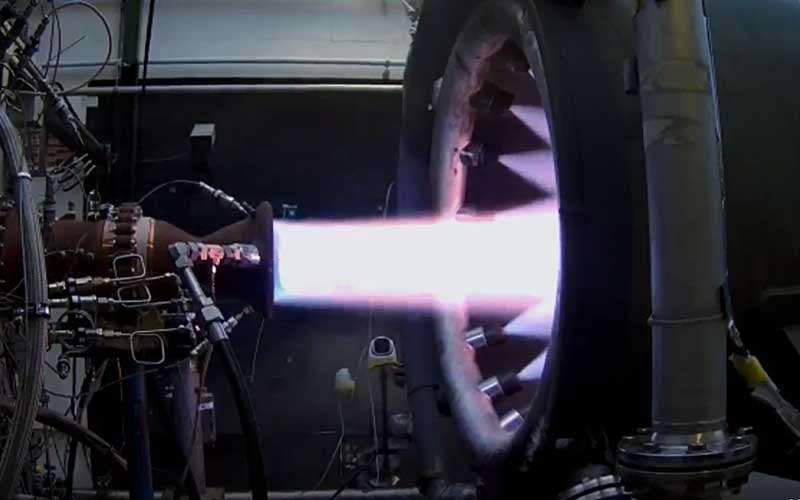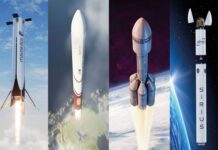
French launch startup Sirius Space Services has completed a successful hot fire test of the newest version of its STAR-1 rocket engine.
Sirius Space began testing its 55kN STAR-1 engine at ArianeGroup’s facilities in Vernon in May using the BAMOCRY (Banc MOdulaire CRYogénique) modular test bench, which was designed to offer startups with a hassle-free engine testing environment. This test campaign saw the company complete an initial ignition followed by two hot fire tests that lasted eight and ten seconds.
In mid-December, Siruis Space revealed the second iteration of its STAR-1 engine. The rocket features a copper alloy combustion chamber that is produced using laser powder bed fusion additive manufacturing.
This upgraded version of the company’s STAR-1 engine was fired for the first time earlier this week at the DLR testing facility in Lampoldshausen. The engine was fired for a total of 60 seconds. According to the company, the test validated the engine’s regenerative cooling system, the efficiency of its injectors, the stability of its combustion, and its thrust performance. Although this is a significant step forward for Sirius Space, the engine is not quite flight-ready, with the company stating that the test moved it “closer to the flight configuration” of the engine.
Sirius Space will utilize STAR-1 to power a range of three launch vehicles each with increasingly large payload capacities.
Sirius 1 will feature no boosters and nine first-stage engines and will stand at 24.7 metres. The vehicle will be capable of delivering 175 kilograms to orbit, with a maiden flight expected in 2025.
Sirius 13 will feature two strap-on boosters, which will, together with the core stage, feature a combined 27 STAR-1 engines. The vehicle will be capable of delivering 600 kilograms into orbit and is expected to debut in 2026.
The largest of the three vehicles is Siruis 15, which will be capable of delivering 1,000 kilograms into orbit. With four strap-on boosters, the vehicle will, together with its core stage, feature 45 STAR-1 engines. Sirius 15 is expected to be launched on a maiden flight in 2027.


